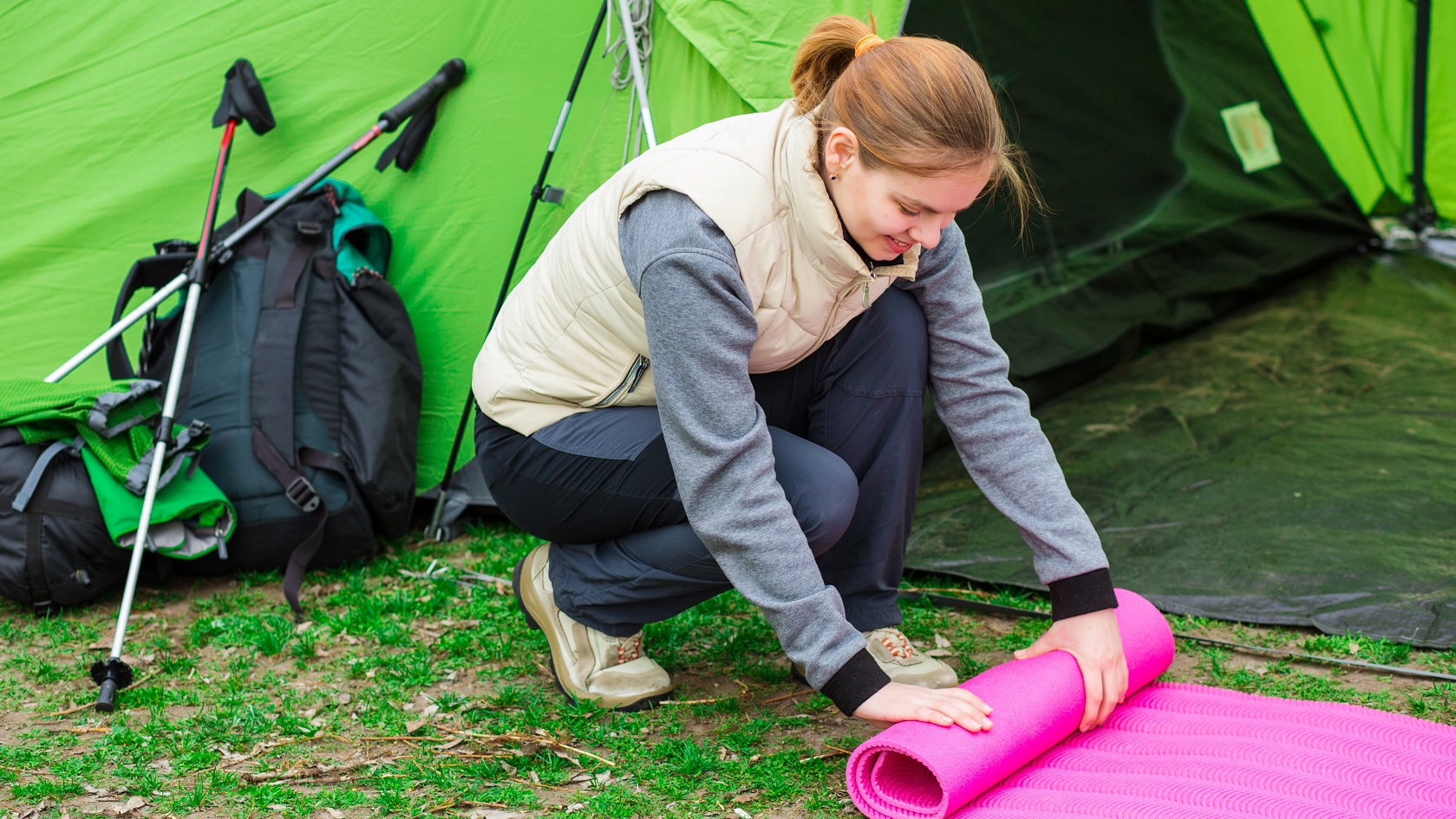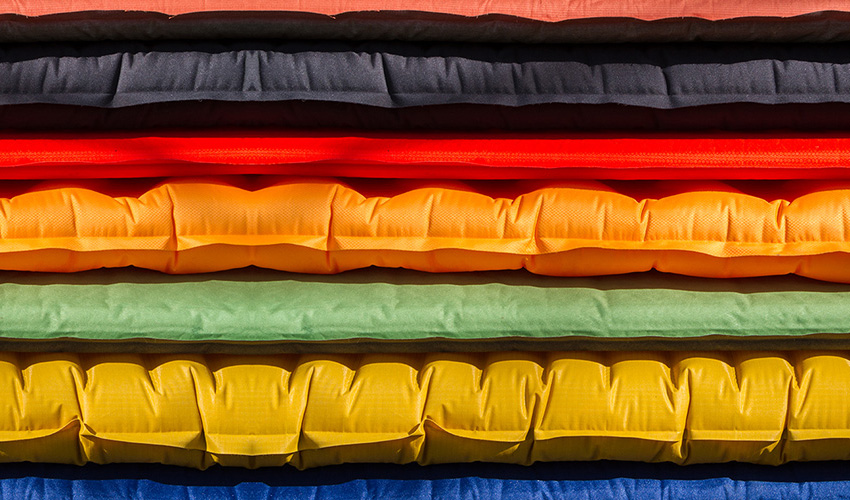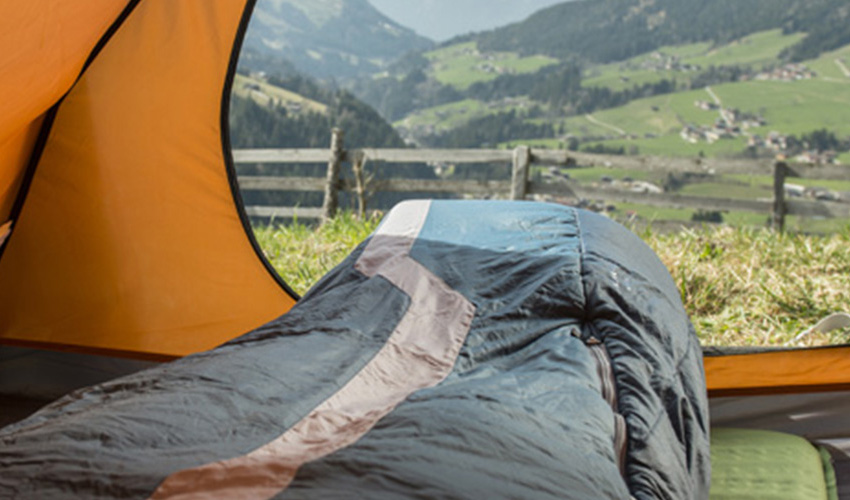A Sleeping Mat is an essential part of your camping set-up, offering you comfort, warmth, and a good night’s rest. At Cotswold Outdoor, we know the importance of having the right kit when camping outdoors, so we’ve put together this guide on choosing the right sleeping mat - to help you choose the perfect one for your next camping adventure.
Sleeping Mat Buying Guide
Choosing a Sleeping Mat for Camping
Camping in the UK’s great outdoors—whether in the Cotswolds, the Lake District, or the Scottish Highlands—means comfort and rest are as important as adventure. A sleeping mat is the foundation of a good night’s sleep under the stars. With so many options, technical features, and new technologies on the market, choosing the right sleeping mat can be daunting. This comprehensive guide will answer the most searched questions, cover expert tips, and help you find the perfect mat for your next adventure.
Why Do I Need A Sleeping Mat?
For anyone who values comfort, warmth, and a good night's sleep, a sleeping mat is an essential part of their camping set-up. However, for multi-day trekkers and festival-goers, it can sometimes be hard to weigh the cons and pros of carrying an extra piece of equipment. Sleeping mats have two main functions: Insulation and Comfort.
Comfort is perhaps the more obvious benefit, as a sleeping mat provides cushioning over uneven ground and gives a more mattress-like feel.
Insulation from the ground can be essential as whilst your sleeping bag protects you from losing body heat to the air, the ground beneath you can conduct heat away from you faster. A sleeping mat prevents this from happening and keeps you warmer through the night.
If you can, we do always recommend carrying a sleeping mat as the pros of bringing one along far outweight the cons of carrying it. When choosing your sleeping mat, you should consider the importance of the following factors: Warmth, Weight, Pack Size, and Comfort. Once you know which of these are your priorities, your decision will become a much easier one.
What Sleeping Mat Should I Buy?
With so many different types of sleeping mats available, it can sometimes be hard to sift through the options to understand which is the right mat for you. From Self-Inflating Mats, Air Beds, and Air-Filled Mats to Roll Mats and Foam Mats - here's our guide to the pros and cons of every kind of sleeping mat:
Self-Inflating Mats
Self-Inflating Sleeping Mats are filled with foam, containing tiny pockets that expand and pull in the air when the valve is opened or set to 'inflate'. This foam traps the air and becomes your insulation and cushioning. Self-inflating mats come in many different shapes and sizes to help you find the perfect balance of insulation, packability, and cushioning from the floor.
The Pros:
- They require minimum effort to inflate
- They're lightweight
- They have a great warmth-to-weight ratio
The Cons:
- They're usually more expensive
- Often not as well-cushioned as air-filled mattresses and airbeds
- Can be prone to punctures (but are easily repaired)
Air-Filled Mats
Air-Filled Sleeping Mats use air to provide cushioning for a great night's rest. Air-filled mats often include additional insulation such as down and reflective materials - ideal for backpacking and multi-day trekking adventures. They’re the ultimate in packable and lightweight sleeping, but unlike self-inflating mats, you provide the puff to inflate them.
The Pros:
- They're thicker than self-inflating mats - great for side sleepers
- Extremely lightweight and packable
The Cons:
- The air circulating freely inside makes them less warm than self-inflating
- Can be hard to inflate - you may want to bring a pump if you have a respiratory condition/have had a long day adventuring!
Foam Mats
Foam Mats, also known as Roll Mats or Closed-Cell Foam Mats, are simply sleeping mats which roll or fold away without the need for inflation. These are great for backpacking packs with additional straps for carrying roll mats and ideal for van-life and family camping trips as they cannot be punctured and are often cheaper than inflatable alternatives.
The Pros:
- They're light, durable, and often cheaper
- They cannot be punctured
The Cons:
- Packability is poor
- Less warm and comfortable than other options
Air Beds
Air Beds are the traditional inflatable mattresses which are often larger and more high-volume.
The Pros:
- Thick and comfortable, making them the closest option to your bed at home
The Cons:
- They're big and heavy, so only suitable for taking in the car
- They require a pump
- They have no additional insulation
- Prone to punctures and leaks
Our Top Tips For Buying a Sleeping Mat
Check Your Sleeping Mat's Dimensions:
Pack size is a common consideration for a sleeping mat, but the mat you pick needs to be big enough to be fit for purpose too. Your sleeping mat should be wide enough to fit your shoulders whilst lying flat on your back. It is possible to buy ¾ length mats where your feet and lower legs are not insulated, but we only recommend considering these if you're sleeping in comfortable temperatures.
Women-Specific Sleeping Mats:
Some manufacturers produce women-specific mats, which, generally, are a little shorter and contain more insulation around the torso and feet. With the reduction in length and offset against the extra insulation, these pads tend to be a similar weight and pack size, so they're worth considering for the extra warmth.
The Importance of R-value:
On some sleeping mats, you’ll notice an R-value in the product description or on the product. R-value measures the mat’s ability to resist heat flow: the higher the R-value, the warmer and more thermally resistant a mat is. There is currently no industry standardisation of this measurement, so whilst it is useful, R-value is not the best way to compare mats.
Double Up To Warm Up!:
If you’re heading out into extreme or colder temperatures, it’s worth adding an extra mat to provide additional insulation against the ground. A foam mat underneath a self-inflating or air-filled mat is perfect.
Key Factors for Buying a Sleeping Mat
1. Intended Use
Backpacking: Prioritise weight, pack size, and durability.
Car Camping: Comfort and thickness matter more than weight.
Family Camping: Look for robust, easy-to-clean mats.
2. Size and Shape
Length: Should match or slightly exceed your height.
Width: Standard is 51–60cm; wider options are available for side sleepers.
Shape: Mummy-shaped mats save weight; rectangular mats offer more room.
3. Weight and Packability
Ultralight mats: 300–500g, ideal for long treks.
Standard mats: 500–1000g, balance comfort and weight.
Heavy-duty mats: 1000g+, best for car camping.
4. Comfort and Thickness
Thickness: 2–10cm; thicker mats are more comfortable but heavier.
Surface texture: Some mats have anti-slip or soft-touch surfaces for added comfort.
5. Durability and Materials
Denier rating: Higher denier = tougher fabric.
Reinforced fabrics: Look for ripstop or abrasion-resistant materials.
Valve quality: Durable, easy-to-use valves are less likely to fail.
6. Inflation and Deflation
Self-inflating: Convenient, but may need a few extra breaths.
Manual inflation: Use a pump sack or your breath; pump sacks prevent moisture build-up inside.
7. Price and Warranty
Entry-level: £15–£40 (foam mats)
Mid-range: £40–£80 (self-inflating, basic air mats)
Premium: £80–£200+ (ultralight, insulated, technical mats)
Warranty: Check for robust guarantees—some brands offer lifetime warranties.
Sleeping Mats FAQ
The best mat depends on your camping style. For backpacking in the UK, a lightweight inflatable mat with an R-value of 3–4 is ideal. For car camping, a thick self-inflating mat offers maximum comfort.
Even in summer, UK ground temperatures can drop sharply at night. An R-value of 2–3 is recommended for three-season use.
Most inflatable mats come with a repair kit. Clean and dry the area, apply the adhesive patch, and let it cure. For field repairs, duct tape can be a temporary fix.
Self-inflating mats offer a balance of comfort, insulation, and ease of use, but are heavier. Air mats are lighter and more compact but require more care.
Look for mats with anti-slip surfaces or use a grippy tent floor. Placing your mat on a foam base can also help.
Store self-inflating and foam mats flat or loosely rolled with the valve open to prolong their life. Avoid long-term compression.
Shop All Sleeping Mats
To explore even more sleeping mats, why not check out our fantastic sleeping mat and camping collection?
Related articles

Let us know you agree to cookies
We use marketing, analytical and functional cookies as well as similar technologies to give you the best experience. Third parties, including social media platforms, often place tracking cookies on our site to show you personalised adverts outside of our website.
We store your cookie preferences for two years and you can edit your preferences via ‘manage cookies’ or through the cookie policy at the bottom of every page. For more information, please see our cookie policy.








